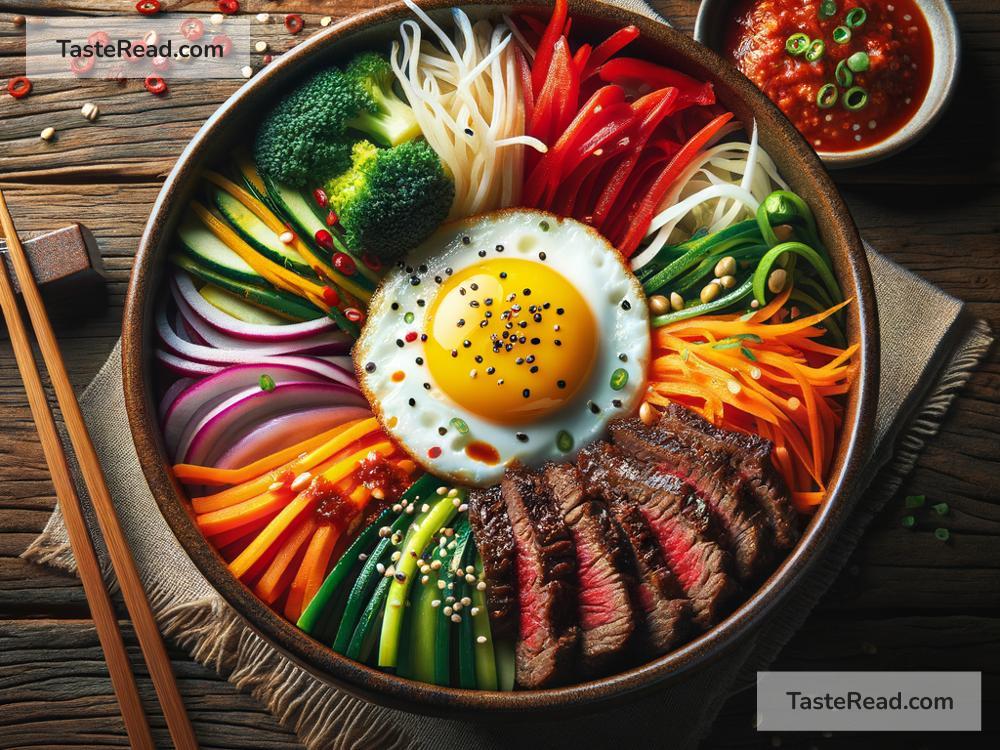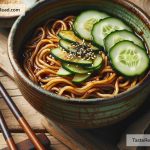How to Make Korean Bibimbap at Home in Simple English
Korean Bibimbap is like a vibrant canvas painted with the colors of various ingredients. It’s not just food; it’s an experience. This traditional Korean dish combines rice, vegetables, meat, and egg, topped off with a spicy gochujang sauce, all mixed together right before eating. The beauty of Bibimbap lies in its versatility and simplicity, making it an ideal dish to try at home, no matter your cooking level. Here, we’ll walk you through the journey of making Bibimbap in your kitchen, simplifying each step so you can enjoy this delicious Korean favorite without needing a plane ticket.
Ingredients You’ll Need:
- Cooked Rice: The base of Bibimbap. Any type should do, but short-grain rice gives the best texture.
- Vegetables: Common choices include spinach, bean sprouts, carrots, and zucchini, but feel free to use what you like or have.
- Beef: Typically, ground beef or thinly sliced beef is used. However, you can also use chicken or tofu for a vegetarian version.
- Egg: One egg per bowl, usually fried sunny side up.
- Gochujang Sauce: This is a spicy, slightly sweet sauce that brings the whole dish together. You can adjust the spiciness to your taste.
- Sesame Oil and Soy Sauce: For seasoning the vegetables and beef.
- Garlic, salt, and sesame seeds: For added flavor.
Preparing Your Ingredients:
-
Vegetables: Each vegetable should be prepared separately. Typically, they are sautéed lightly or blanched in boiling water, then seasoned with a bit of salt and sesame oil. For instance, spinach can be blanched for about a minute, squeezed of excess water, and then mixed with a pinch of salt and sesame oil. Carrots and zucchini can be julienned and sautéed lightly in a pan. Bean sprouts are also blanched and seasoned. Remember, the goal is to maintain a bit of crunch.
-
Beef: Marinate your beef with a mixture of soy sauce, minced garlic, a bit of sugar, and sesame oil. Let it sit for a bit, then cook it on a medium-high pan until it’s nicely browned. For a vegetarian version, tofu can be prepared similarly.
-
Rice: Use freshly cooked rice or reheat leftover rice. Each serving of Bibimbap needs a good base of warm, fluffy rice.
-
Gochujang Sauce: Mix gochujang paste with sesame oil, a bit of sugar, and water. You can add minced garlic and a splash of vinegar to enhance the flavors. Adjust the ingredients according to how spicy or sweet you like it.
-
Egg: Fry an egg sunny side up. The runny yolk will add a creamy texture to the dish.
Assembling Bibimbap:
Now comes the most satisfying part – bringing it all together. Take a bowl (a big one, so you have room to mix everything) and start with a layer of rice. Then, beautifully arrange your prepared vegetables and beef on top of the rice. The key here is to go for a variety of colors and textures. Place your fried egg right in the center.
Drizzle your gochujang sauce over the top. A spoonful is a good start, but adjust according to how spicy you like your food. Sprinkle some sesame seeds for an extra bit of flavor and crunch.
The final step? Mix everything together thoroughly. Yes, it might feel a bit sad to mess up your beautiful arrangement, but trust us, it’s worth it. The flavors and textures combine to create something truly special.
Conclusion:
Making Bibimbap at home is a joyful journey that ends in a delicious, hearty meal you can be proud of. It’s a dish that’s as fun to prepare as it is to eat, allowing for creativity and personal touches along the way. Don’t be afraid to experiment with different vegetables, proteins, or levels of spice. The essence of Bibimbap is in mixing – both the ingredients in the bowl and the traditions of Korean cooking with your unique twist. Happy cooking, and enjoy your homemade Korean Bibimbap!


